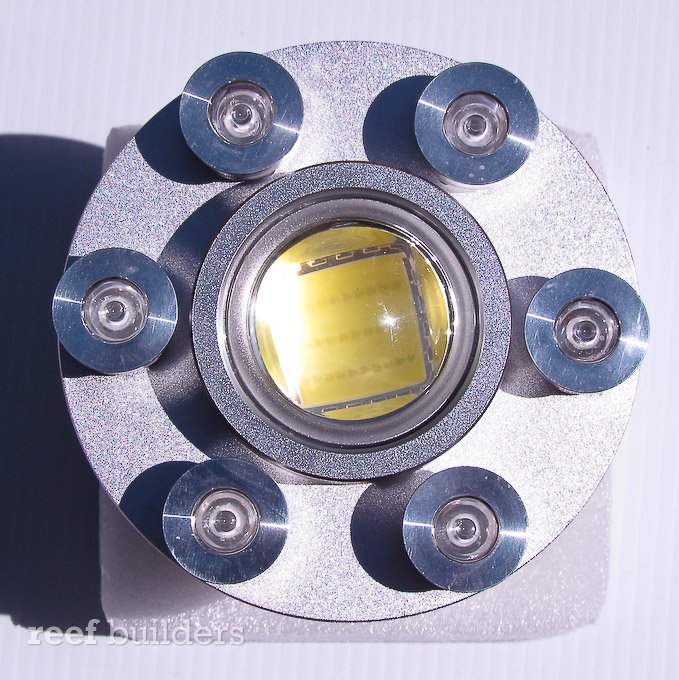We first met the P30 LED from Blue Moon Aquatics last fall where it was without a name, and we just called it the Combo Multichip LED pendant. A subsequent video of the P30 LED showed what this light looks like in moving image but now that we’ve got our hands on a production model, it’s time to see what the P30 LED spotlight can do in real life.
Before we get down to the nitty gritty, a customary hands-on inspection is in order to see what makes the P30 LED spotlight do its thing. The BMA P30 LED is the first pure multichip LED spotlight with supplemental blue LEDs to balance out the spectrum but does it really work? Continue reading to see what’s great about the P30, a couple things we’d change and how this light compares to other multichip LED lights currently on the market.
The Blue Moon Aquatics P30 LED spotlight consists primarily or a large 30 watt multichip LED which is available in 10,000K and 15,000 Kelvin as well as an all blue flavor with an emission peak of 460nm. The 30 watt multichip LED is backed up with a substantial mass and surface area heat sink to keep the multichip LED from getting too hot. The flat underside of the P30 LED can be equipped with the optional ‘Saturn Ring’ of three watt blue LEDs for a total of 50 watts of power riding the heatsink. With one connection the BMA P30 LED light driver has two channels for driving each of the white and blue LEDs separately.
The nominal price of the P30 LED is $499 with the optional ring of blue LEDs adding $119 to the overall cost. Without the blue LEDs, the $500 price tag of the 30 watt P30 LED is hard to justify against the $550 50 watt Ecoxotic Cannon LED. However, once you throw in the blue LEDs with independent control for a total of 50 watts of bichromatic light for $620, the Blue Moon Aquatics P30 starts to look a lot more attractive. The BMA P30 is already available from the Blue Moon Aquatics website and should be hitting Blue Moon Aquatics dealers any day now.
Below you will find the full unboxing and first impressions of the P30 LED and stay tuned for when we actually put this light over a reef tank.






















